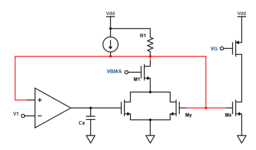deep_sea
Advanced Member level 4
Hi guys,
Can you recommend a good resource to understand the loop and stability analysis? I mean to master the loop and understand by intuition or by analysis the impedance seen by nodes and effect in feedback system not just understand the Bode plot and gain and phase margin.
Can you recommend a good resource to understand the loop and stability analysis? I mean to master the loop and understand by intuition or by analysis the impedance seen by nodes and effect in feedback system not just understand the Bode plot and gain and phase margin.
